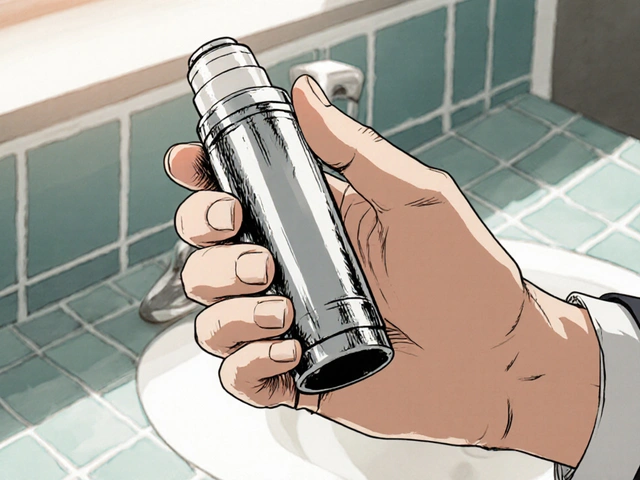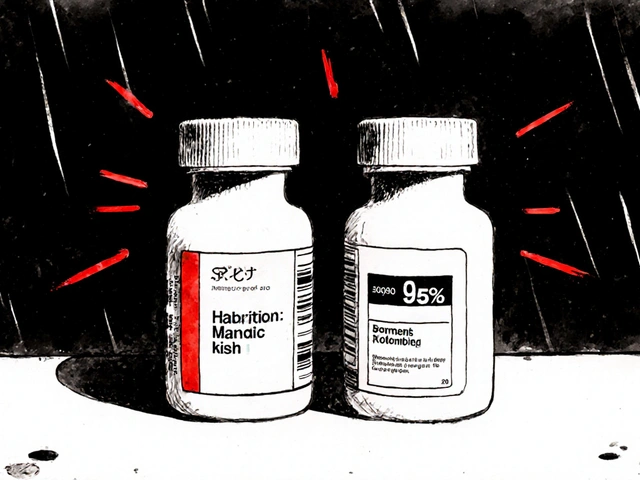Tonsillitis: Symptoms, Causes, and How to Treat It
If your throat feels raw, you’re swallowing painful pills of food, or you’ve got a fever that won’t quit, you might be dealing with tonsillitis. It’s an inflammation of the two small glands at the back of your mouth – the tonsils. Most people get it once or twice in their lives, and most cases clear up with simple care.
Typical signs show up fast: a sore throat that hurts more when you swallow, red swollen tonsils (sometimes with white spots), trouble breathing through your mouth, and a fever over 38°C. Kids often have ear pain because the nerves in the throat connect to the ears. If you notice bad breath, swollen neck glands, or a muffled voice, those are extra clues.
What Triggers Tonsillitis?
The majority of cases come from viruses – think colds, flu, or Epstein‑Barr virus (the cause of mono). Bacterial infections, especially Streptococcus pyogenes (strep throat), make up the rest. Knowing whether it’s viral or bacterial matters because antibiotics only help with bacteria.
Risk factors include crowded schools, close contact with sick people, and a weak immune system. Smoking or exposure to second‑hand smoke can irritate the tonsils and make infection more likely.
How to Manage It at Home
Start with over‑the‑counter pain relievers like ibuprofen or acetaminophen – they cut fever and ease throat pain. Gargle warm salt water (½ teaspoon of salt in 8 oz of water) a few times a day; it reduces swelling and clears mucus.
Stay hydrated. Warm teas, broth, or even ice chips keep the throat moist and help you feel better. Soft foods – yogurt, oatmeal, mashed potatoes – are easier to swallow than crunchy snacks.
If symptoms linger beyond 5‑7 days, get a rapid strep test at a pharmacy or see a doctor. A positive result means antibiotics such as amoxicillin are appropriate. Finish the full course even if you feel better early; stopping too soon can cause resistance and relapse.
When to seek medical help? Call your doctor if you have difficulty breathing, drooling because you can’t swallow, a rash with fever, or extreme fatigue. These could signal a complication like an abscess or rheumatic fever.
For chronic tonsillitis (multiple episodes a year) doctors might recommend a tonsillectomy. The surgery removes the tonsils and prevents future infections, but it’s usually reserved for kids with sleep apnea or adults who keep getting severe bouts.
Bottom line: Most tonsillitis cases are mild and clear up with rest, fluids, and OTC meds. Keep an eye on how long symptoms last, watch for warning signs, and don’t skip a doctor visit if you suspect bacterial infection. Quick, proper care gets you back to normal faster and avoids unnecessary complications.
Amoxicillin for Tonsillitis: Dosage, Effectiveness, and Side Effects
I recently researched Amoxicillin for treating tonsillitis and found out that it's quite effective in fighting bacterial infections. The typical dosage prescribed is 500mg to 875mg every 12 hours, depending on the severity of the infection. While it's generally considered safe, some possible side effects include nausea, diarrhea, and skin rashes. It's important to follow the prescribed course of treatment to ensure the infection is fully cleared. Always consult with a healthcare professional before starting any medication, especially if you have any allergies or pre-existing conditions.
About
Health and Medicine
Latest Posts


Albuterol Inhaler Cleaning Guide: Proper Maintenance Steps
By Orion Kingsworth Oct 25, 2025

Best Alternatives to Flagyl for Bacterial Vaginosis in 2025: Secnidazole, Clindamycin, and Probiotics
By Orion Kingsworth Apr 24, 2025

Valsartan-Hydrochlorothiazide and Potassium: What You Need to Know
By Orion Kingsworth Oct 15, 2025

